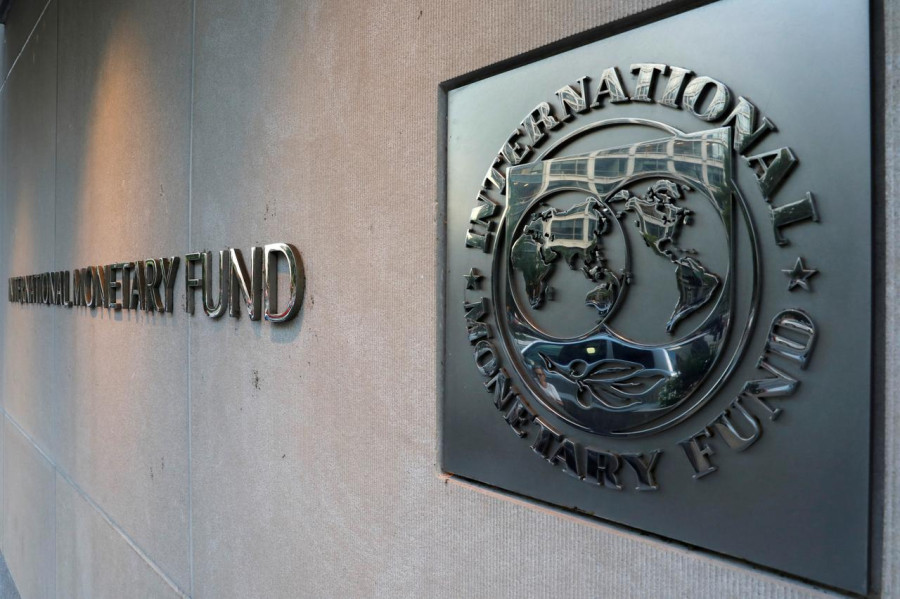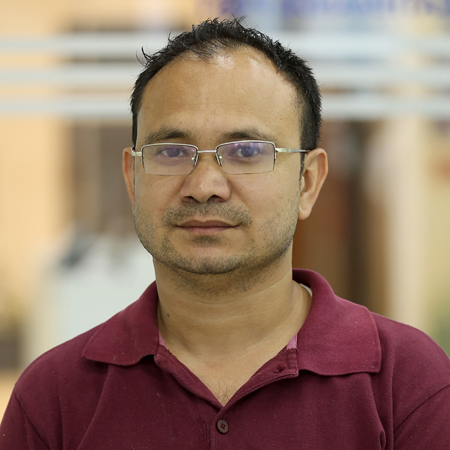Nepal is among the 25 countries to receive debt relief from the International Monetary Fund for six months as part of its response to help address the impact of the Covid-19 pandemic.
The Washington-based global monetary advisor announced the debt service relief for the 25 countries on Monday under its revamped Catastrophe Containment and Relief Trust.
As of December 2019, Nepal’s outstanding loans to be paid to the international institutions stands at SDR 38.5 million ($52.36 million), according to the fund's website.
The SDR (Special Drawing Rights) are the units of account which is like currency and pegged with a basket of important foreign currencies like the US dollar, euro, Chinese yuan and Japanese yen. One SDR is equivalent to 1.36 US dollar.
Nepal had received loans from the fund after the devastating earthquake in April 2015.
“Debt relief for six months means we should not pay installment for six months, including principal and interest,” said Shreekrishna Nepal, chief of international economic cooperation coordination division at the Finance Ministry.
He, however, said that the government had urged the fund to provide debt relief for two years.
During a video conference with senior officials of multilateral lending agencies such as the World Bank, Asian Development Bank, Asian Infrastructure Investment Bank and International Monetary Fund last week, Finance Minister Yubaraj Khatiwada had asked for a deferral of the loan repayment schedule and debt relief from donors.
Under the scheme, the fund provides grants to its poorest and most vulnerable members to cover their debt obligations for an initial phase over the next six months.
“This will help them channel more of their scarce financial resources towards vital emergency medical and other relief efforts,” said Kristalina Georgieva, managing director of the fund, in a statement.
The Catastrophe Containment and Relief Trust can currently provide about $500 million in grant-based debt service relief, including the recent $185 million pledge by the UK and $100 million provided by Japan as immediately available resources.
Others, including China and the Netherlands, are also stepping forward with important contributions, the fund said.
Georgieva has also urged the donors to help it replenish the Trust’s resources and boost further its ability to provide additional debt service relief for a full two years to its poorest member countries.
Other nations that will receive debt service are: Afghanistan, Benin, Burkina Faso, Central African Republic, Chad, Comoros, Congo, DR, The Gambia, Guinea, Guinea-Bissau, Haiti, Liberia, Madagascar, Malawi, Mali, Mozambique, Niger, Rwanda, São Tomé and Príncipe, Sierra Leone, Solomon Islands, Tajikistan, Togo, and Yemen.
Frequently asked questions about the coronavirus outbreak
UPDATED as of September 22, 2020
What is Covid-19?
Covid-19, short for coronavirus disease, is an illness caused by the coronavirus SARS-CoV-2, short for severe acute respiratory syndrome coronavirus 2. Common symptoms of the disease include fever, dry cough, fatigue, shortness of breath and breathing difficulties. In severe cases, the infection can cause pneumonia, severe acute respiratory syndrome, kidney failure and even death.
How contagious is Covid-19?
Covid-19 can spread easily from person to person, especially in enclosed spaces. The virus can travel through the air in respiratory droplets produced when a sick person breathes, talks, coughs or sneezes. As the virus can also survive on plastic and steel surfaces for up to 72 hours and on cardboard for up to 24 hours, any contact with such surfaces can also spread the virus. Symptoms take between two to 14 days to appear, during which time the carrier is believed to be contagious.
Where did the virus come from?
The virus was first identified in Wuhan, China in late December. The coronavirus is a large family of viruses that is responsible for everything from the common cold to Middle East Respiratory Syndrome (MERS) and Severe Acute Respiratory Syndrome (SARS). After an initial outbreak in Wuhan that spread across Hubei province, eventually infecting over 80,000 and killing more than 3,000, new infection rates in mainland China have dropped. However, the disease has since spread across the world at an alarming rate.
What is the current status of Covid-19?
The World Health Organisation has called the ongoing outbreak a “pandemic” and urged countries across the world to take precautionary measures. Covid-19 has spread to 213 countries and territories around the world and infected more than 31,405,983 people with 967,505 deaths and 22,990,260 recoveries. In South Asia, India has reported the highest number of infections at 5,557,573 with 88,943 deaths. While Pakistan has reported 306,304 confirmed cases with 6,420 deaths. Nepal has so far reported 65,276 cases with 427 deaths.
How dangerous is the disease?
The mortality rate for Covid-19 is estimated to be 3.6 percent, but new studies have put the rate slightly higher at 5.7 percent. Although Covid-19 is not too dangerous to young healthy people, older individuals and those with immune-compromised systems are at greater risk of death. People with chronic medical conditions like heart disease, diabetes and lung disease, or those who’ve recently undergone serious medical procedures, are also at risk.
How do I keep myself safe?
The WHO advises that the most important thing you can do is wash your hands frequently with soap and water for at least 20 seconds or use hand sanitizers with at least 60 percent alcohol content. Avoid touching your eyes, nose and mouth with unclean hands. Clean and disinfect frequently used surfaces like your computers and phones. Avoid large crowds of people. Seek medical attention if symptoms persist for longer than a few days.
Is it time to panic?
No. The government has imposed a lockdown to limit the spread of the virus. There is no need to begin stockpiling food, cooking gas or hand sanitizers. However, it is always prudent to take sensible precautions like the ones identified above.





 6.73°C Kathmandu
6.73°C Kathmandu










%20(1).jpg&w=300&height=200)




